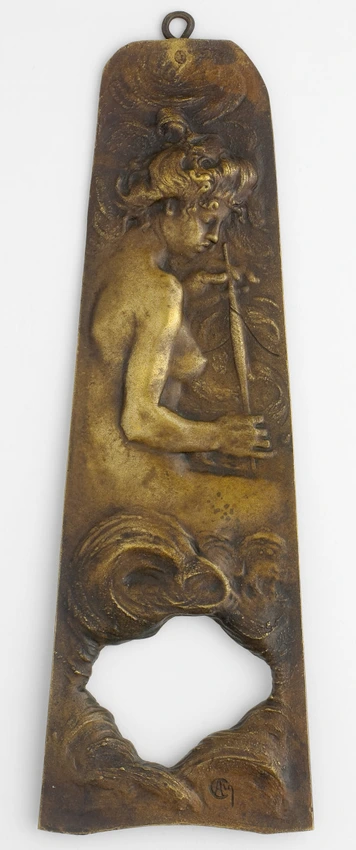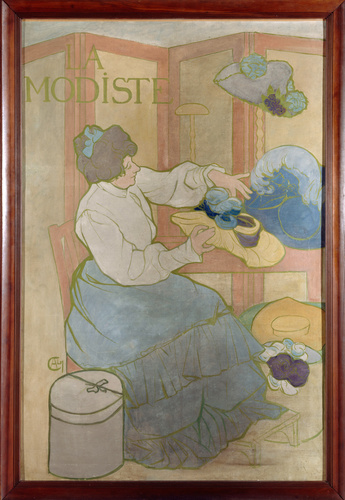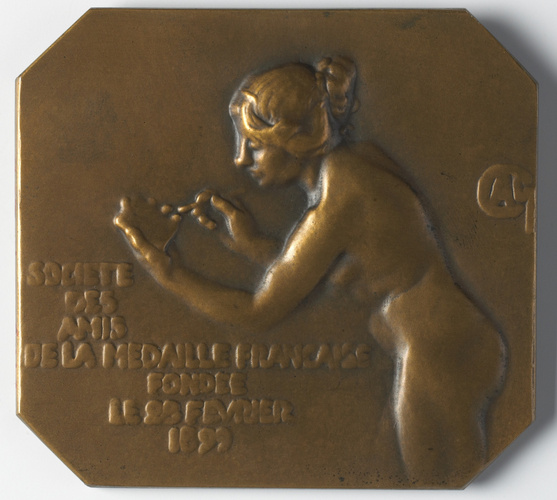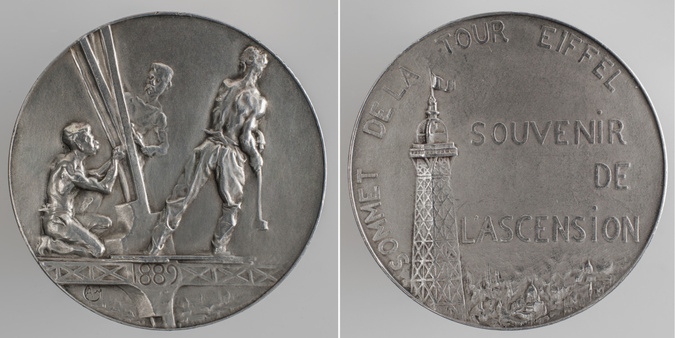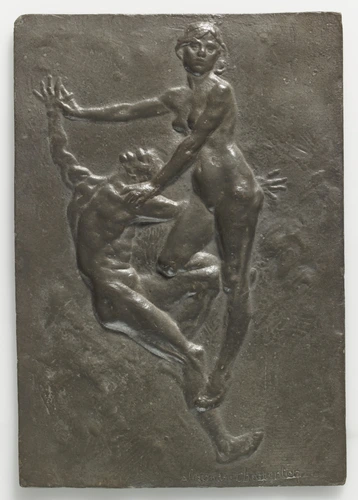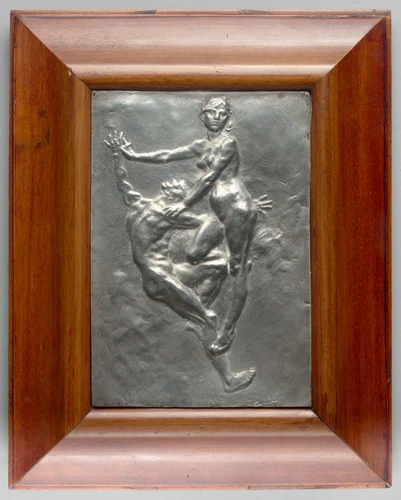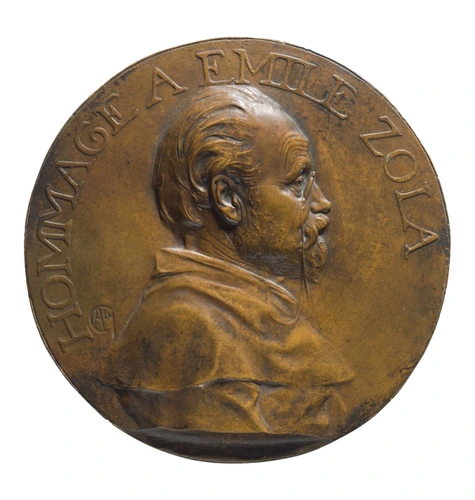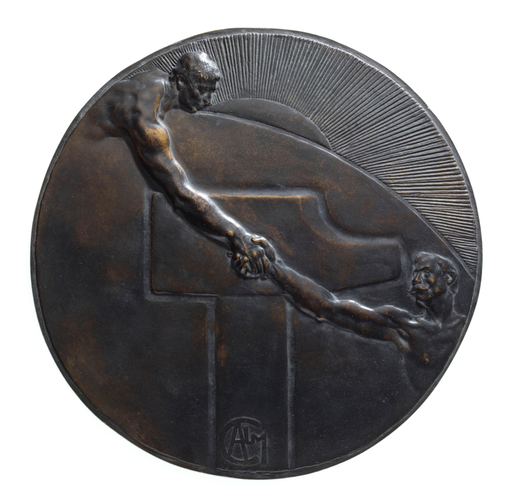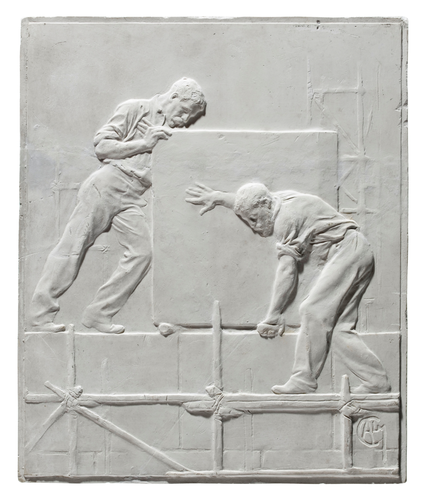Clotho
Charpentier showed himself to be a master in the art of low relief from his very first exhibits at the Salon. His medals and plates with familiar or symbolist subjects reveal incomparable ease. He breathed life and feeling into these little figures whose subtle relief is surprisingly forceful. More than his monumental works, it is his many small bronze plates which brought him lasting success.
They are made of bronze, pewter, ceramics, stamped leather or embossed paper, often patinated or gilded and used as ornaments.
In various shapes (rectangular, round, oval, octagonal), these reliefs were mostly produced by the locksmiths, Fontaine, as finger plates, door handles or window catches. But they were sometimes designed to decorate furniture or objets d'art, as here. The Clotho plate was cut to fit on to the base of a wooden and gilt bronze clock made in partnership with Tony Selmersheim. The design was inspired by the antique myth of the three fates (Parcae) who successively span (Clotho), measured (Lachesis) and cut (Atropos) the thread of human life.
This piece is a reminder of Charpentier's involvement in the renewal of the domestic arts during the 1890s and 1900s.
